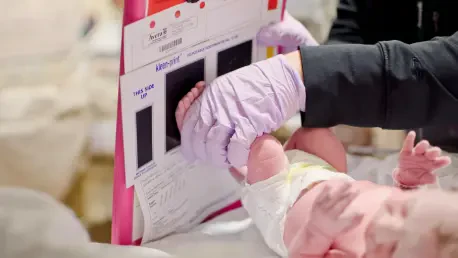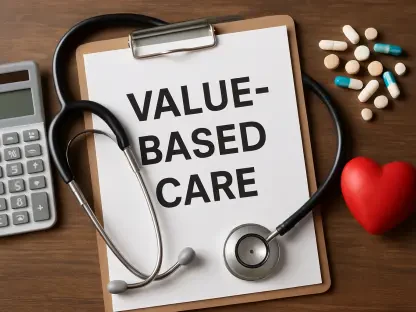Imagine a world where documenting a child’s health check-up becomes as streamlined as scanning a barcode. This is not a futuristic dream but a growing reality thanks to the innovative use of artificial intelligence (AI) in pediatric healthcare. Recent studies demonstrate that pediatric visits are far more complex than their adult counterparts due to the varied developmental stages and healthcare needs children present, making efficient and accurate record-keeping a critical but challenging task.
The Significance of AI in Pediatric Care
In healthcare today, the push for efficiency and precision is leading numerous medical fields to explore AI’s capabilities, and pediatric care is no exception. Traditional documentation methods during children’s well visits have long been the bane of clinicians, who must navigate through the intricate details of each child’s development stage while ensuring thoroughness. This complexity is mirrored in the broader trend of AI adoption across healthcare sectors, where the technology is utilized to enhance patient care and streamline workflows significantly.
Abridge’s Game-Changing Pediatric Template
Enter Abridge, an AI clinical documentation startup that has made headlines with its cutting-edge ambient AI technology. Abridge’s new pediatric visit documentation template is not only adaptive to the specific developmental needs of children but is also responsive to the nature of the visit, whether it’s for a toddler or a teenager. This has been achieved through a collaborative process with pediatric practitioners, ensuring that each feature of the technology is grounded in real-world application and medical expertise.
Renowned physician Dr. Shiv Rao has spoken to the value of having automated, precise documentation for pediatricians, ensuring that essential health areas such as diet, sleep, and developmental milestones are meticulously recorded. These specialized notes, shaped by thousands of clinician opinions, have transformed how health systems document pediatric visits, achieving high satisfaction rates among practitioners.
Clinician Feedback and Market Impact
Feedback from those utilizing the AI documentation shows enthusiasm, with a stellar average satisfaction rating from clinicians across multiple health systems. This positivity is reflected in Abridge’s rapid integration into over 100 health systems, highlighting the industry’s confidence in AI-powered solutions. The impressive market traction is backed by significant financial investments, indicating a strong belief in the technology’s potential to reshape pediatric healthcare documentation.
The demand for such AI innovations extends beyond pediatrics, as Abridge’s journey includes developing solutions for emergency care and collaborations with prestigious healthcare institutions. The continuous expansion underscores the transformative power and adaptability of AI in handling diverse medical disciplines.
Integration Strategies for AI in Pediatric Documentation
Healthcare providers keen on adopting AI tools must consider strategic approaches to integration. Customizing templates to fit a specific practice setting and ensuring that they enhance the patient-provider interaction are key. These steps help maximize benefits, paving the way for a smoother transition into AI-driven workflows that prioritize both efficiency and patient care quality.
As AI technologies continue to evolve, the future of pediatric well visit documentation may well witness even greater advancements. The task facing healthcare providers now is to embrace these changes proactively, ensuring their integration into pediatric workflows enhances the interactions and relationships crucial in children’s healthcare.
Reflecting on these advancements, it becomes clear that AI has already begun to transform pediatric healthcare documentation meaningfully. The path forward lies in leveraging these innovations to create more efficient, compassionate, and connected healthcare environments—a goal that stands to benefit clinicians and patients alike.









